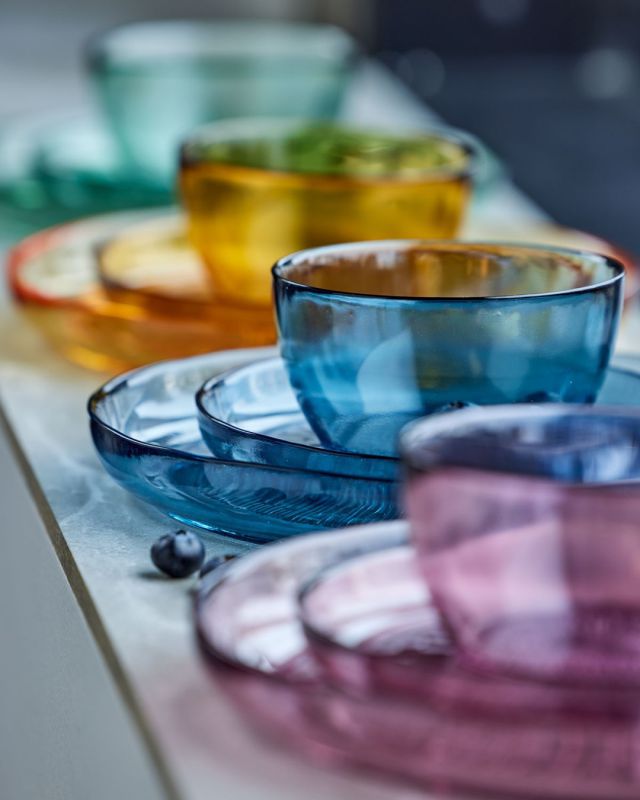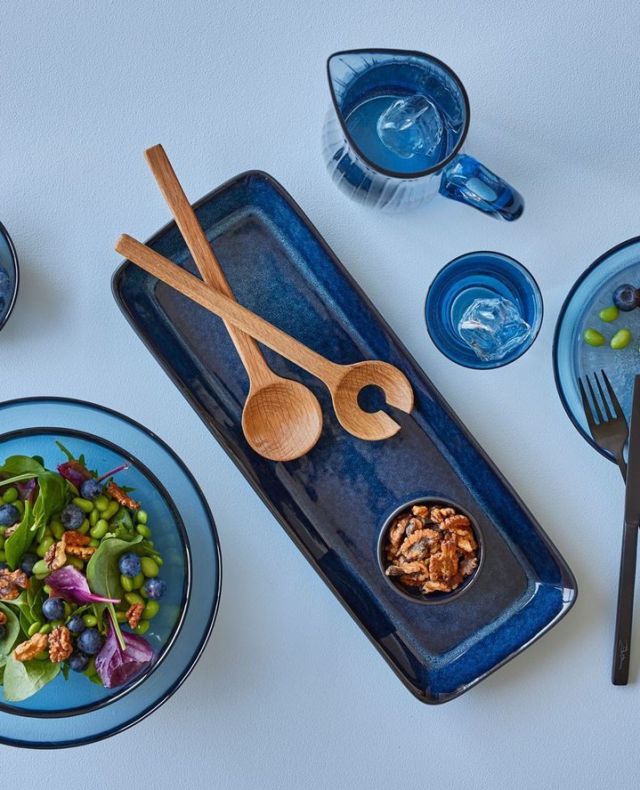Tips &
inspiration
THE PLATE MODEL
What can we do to eat a little healthier? It’s simple! I’ve created a simple plate model that you can use as a guide to put together healthier meals. The purpose of the plate model is to adjust the balance between carbohydrates and protein so that the body gets the essential nutrients, optimal satiety and, equally as important, the chance to create food that tastes great. Because it’s important that food tastes good and is easy to prepare. The basic principles of meal composition are simple.
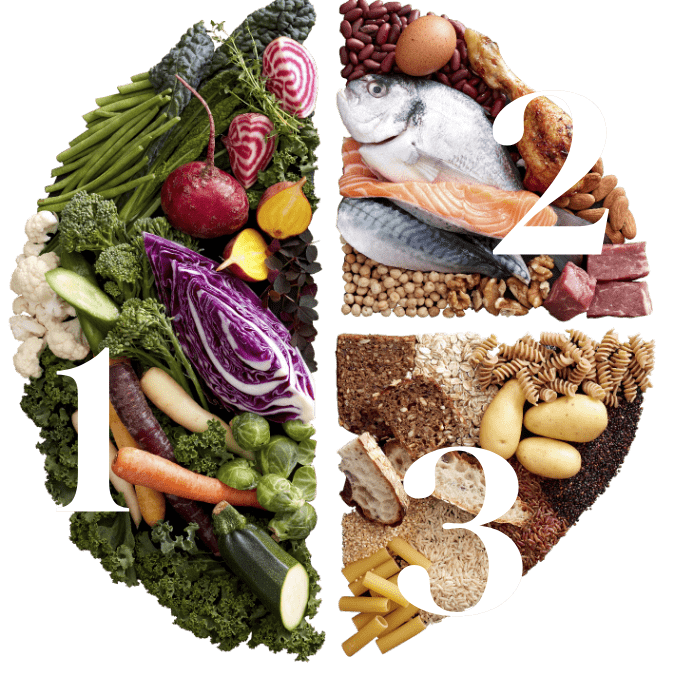
Eat protein-rich foods and choose the best carbohydrate sources. The purpose of eating protein-rich food is to boost your energy and performance. It is beneficial to let proteins comprise 20-30% of your energy intake. You’ll find proteins in legumes, nuts, fish, seafood, poultry, meat, eggs, and dairy products.
Carbohydrates are primarily found in fruits, berries, vegetables, cereals, rice and potatoes. It is important to choose carbohydrate sources that absorb slowly into the blood. That’s the case for almost all fruits and vegetables. When it comes to grains, you should choose whole grain products in which the grains are as intact as possible. Wholemeal pasta, potatoes and vegetables should be cooked as lightly as possible – pasta should be al dente, and potatoes should be left with a little “bite” to them, while vegetables should be lightly steamed or eaten raw.
Translated into the plate model, this means that half of the plate is composed of vegetables, a quarter of protein-rich foods, and the last quarter is made up of carbohydrate sources, that is, traditional side dishes such as rice, pasta and potatoes.
1. Vegetables, preferably as many different kinds as possible.
2. Protein-rich foods such as fish, poultry, legumes, dairy products or eggs.
3. Carbohydrate-rich foods like potatoes, rice, pasta or bread.
EAT TOGETHER
Unfortunately, we are eating fewer meals together as families because our lives are becoming ever busier. And that affects both our health and social cohesion. When we eat meals together with others, we think more about how much and what we are eating – we simply eat in a healthier way. Sharing a meal also strengthens relationships and a sense of family togetherness. The food is of course the focus, but the togetherness and atmosphere are of enormous importance. As the conversation flows and we take stock of what has happened during the day, and when we give ourselves time to have real conversations, it helps to give the meal invaluable importance for the family and for the family’s overall development.
Canadian research has shown that six-year-old children who enjoyed many family meals in everyday life were also healthier and consumed less sugary drinks by the time they reached the age of 10. They also had better social skills, and this could be a result of the time children spend talking with their parents during mealtimes. This finding is backed up by a major Danish study from DTU National Food Institute in Denmark, which showed:
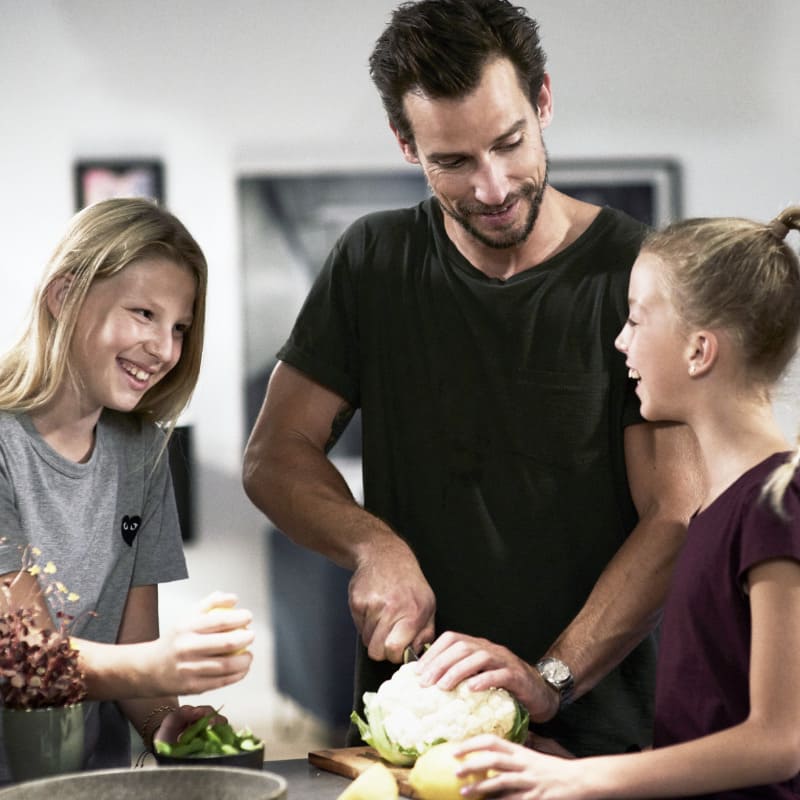
It’s not just the social aspect that affects our appetite and health. So do the plates we eat from. Research has shown that when we eat from plates with small eating surfaces, we eat reduced portions and thus fewer calories. This is probably due to an optical illusion, because a portion of food served on a small plate looks larger than when the same portion is served on a large plate.
The size of the plate thus helps to determine what we consider an appropriate portion size. This is the reason for the development of the original BITZ dinnerware, where the eating surface is smaller. There is also research that indicates that coloured plates can influence appetite and make ingredients and dishes look more inviting.
EXERCISE
What type of workout should we choose, and how should we approach it? The answer is not simple, and it’s certainly not the same for everyone. Basically, the most important thing is that you do exercise and that you make an effort to be fully present during exercise and focus on getting the most out of it. If you want to exercise effectively, you need to focus on getting a short blast of intense exercise rather than a slow and steady workout. But exercise is basically movement, and everything counts! So instead of fretting about what you didn’t get done, feel good about everything that you actually have achieved. It could be a walk during your lunch break or taking the stairs instead of the lift. We need to remember and feel good about these small daily positive choices! So move when you can and enjoy the effect of even the smallest improvements.
TIME SPENT EATING (MORNING AND EVENING): the longer time spent eating, the healthier the eating habits
SKIPPING MEALS: the more meals are skipped, the less healthy the eating habits
HAVING BREAKFAST WITH OTHERS means healthier eating habits
HOMEMADE FOOD means healthier eating habits
BETTER EATING HABITS
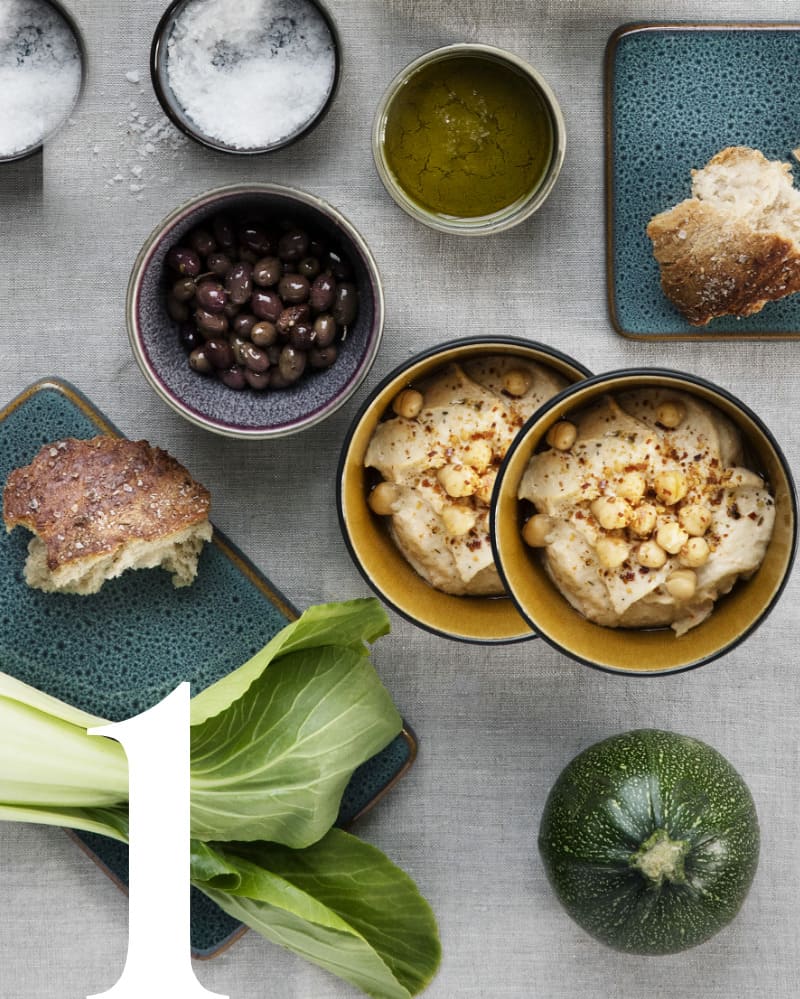 EAT MORE FLAVOURFUL FOOD
EAT MORE FLAVOURFUL FOODGood, flavourful food satisfies our senses so we eat our fill in quality rather than quantity. Prioritise eating good quality produce and limit the amount of processed foods you consume. Look at the list of ingredients: If there’s something you can’t pronounce, don’t put it in your mouth.
 EAT MORE VEGETABLES
EAT MORE VEGETABLESMake it a rule to eat vegetables, berries, or fruits at all meals. They are packed with nutrition, vitamins and minerals, the satiety factor is top notch, and the calorie content is extremely low, which is optimal for our health. Look for seasonal produce to get the full benefits of flavour and health.
 EAT EVERYTHING
EAT EVERYTHINGIf you are really strict about avoiding sweets, your craving for them will increase and you will “cave in” to your craving. Which is why I always say: Nothing is forbidden! Healthy foods are good for the body, but less healthy ingredients such as red wine, cakes or sweets can also be good for the soul as well as your mood. And if you want to prepare healthy foods, they often require a little butter, cream and other flavourings to make them taste good. So don’t rule anything out. Instead, take pleasure in how wonderful it is to eat food that benefits both body and soul!
